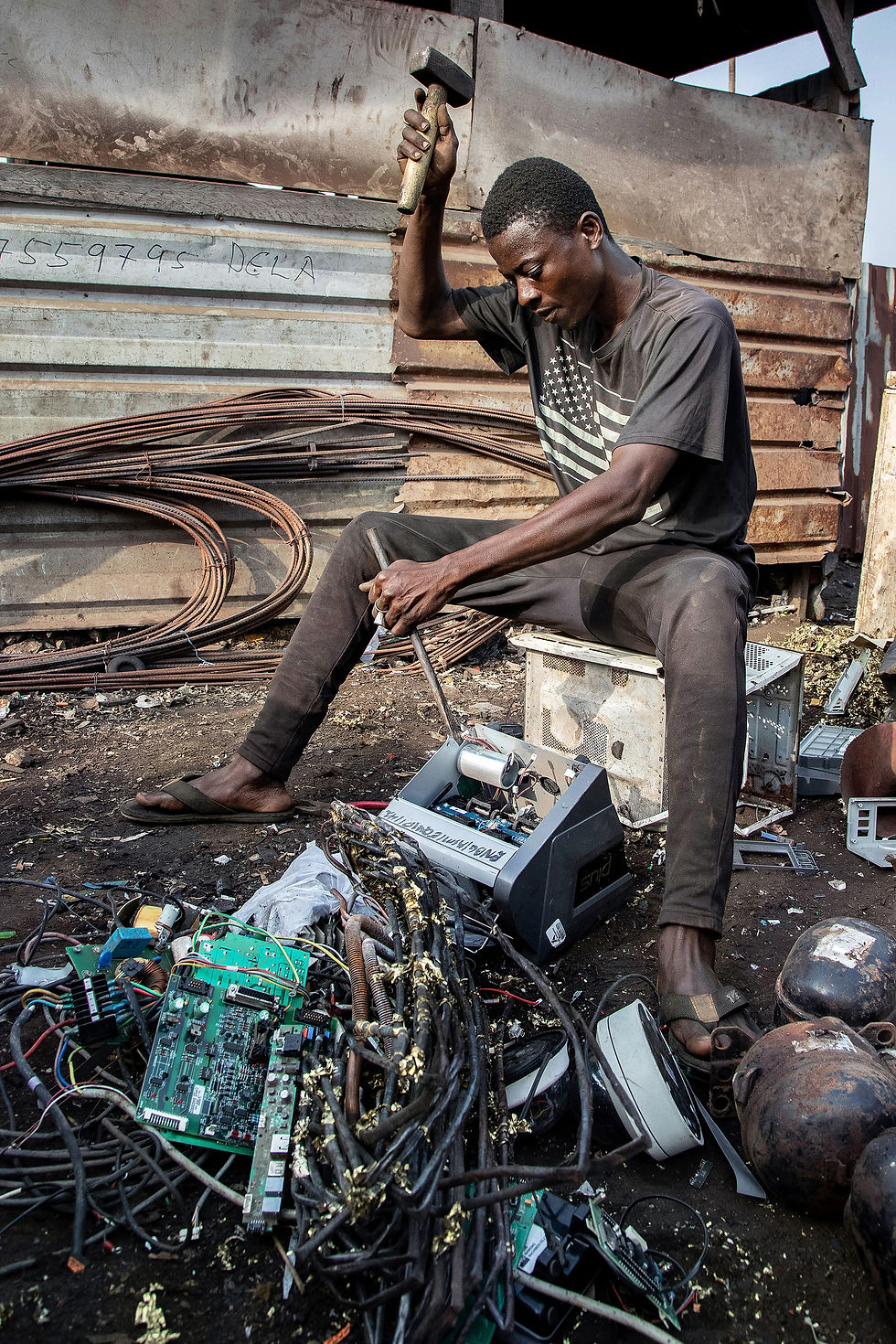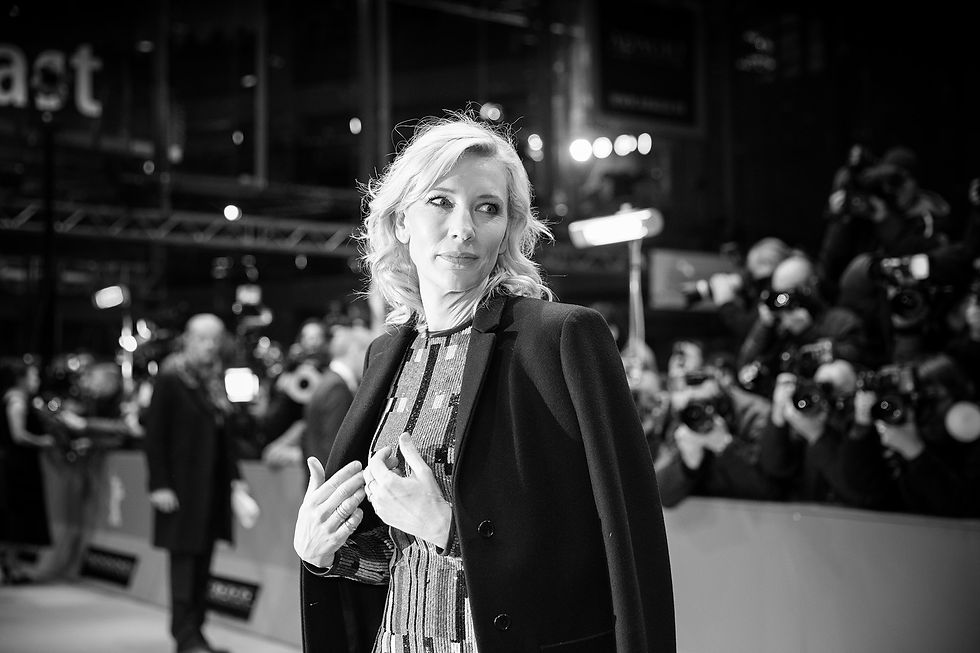Photographing the change: Sandra Weller's Lens on Environmental Advocacy and Global Art
- Cristina Sandu
- Jun 7, 2024
- 4 min read
Updated: Aug 4, 2024
Sandra Weller tells Cristina Sandu about advocating for environmental issues, documenting moments in Africa, and capturing international artists at prestigious events
In the overwhelming heat of Gambia, having a fridge and a freezer is a luxury. This luxury now helps Mamu with her first business selling ice and cool drinks. However, these advancements were made possible only because solar energy was introduced to her village, Nymanarr. In 2022, Nymanarr became one of the first villages in Gambia to gain access to solar power via a photovoltaic (PV) mini-grid system.
Documentary photographer Sandra Weller captured this impactful moment in Gambia to show how sustainable energy can change people’s lives. Through her camera lens, Sandra presents technology’s impact on the community and its development for a better future.
This specific picture with Mamu from Sandra’s portfolio won the 2022 Earth Photo Award for the Climate Change section. Mamu’s captivating story showcasing how sustainable energy can change a whole community was recognised for its powerful message. “Many parts of the world are already uninhabitable, and how we live is the reason,” she says. “But for most people, that seems unimportant, and I find that frightening.”
“Visual storytelling has the power to evoke emotions in viewers. By cultivating empathy, it encourages people to feel more inclined to want to change something”
Sandra’s artistic journey includes being featured in publications worldwide, including TIME, National Geographic Traveler, and Newsweek. Her commitment to showing the world the real problem with our environment is essential for Sandra because she wants her photographs to “tell viewers something they don’t know yet,” she says. “I want to use my images to highlight issues, raise awareness, point out injustices and problems, and show their solutions. My biggest goal is to see them lead to positive change.”
In 2023, Sandra won the Lagois Förderpreis for Climate Justice, which highlighted her motivation to explore our changing world more deeply. Her project Ghana: Opportunities and Challenges was created with the idea of making “positive steps,” she says. Winning prestigious awards motivated Sandra to deepen her knowledge of these subjects and explore new topics related to global justice.
“Thanks to this award, I could give a talk and show my photos at an important festival for environmental issues. Many experts who work intensively with these issues were there, so connecting with them brought positive changes to my project,” she says.
From Sandra’s project Ghana: Opportunities and Challenges, the picture in which Nurideen destroys a faulty battery charging device stands out because it was shortlisted for the 2023 Earth Photo Award. In this picture, the inverter was used as a backup system in a photovoltaic energy storage system. Later, Nurideen will sell the copper and metal, while the other worthless materials will be burned or discarded.
The focus of this was highlighting that “people are not aware of what happens to the materials after they are broken,” she says. “In Africa, there is a lack of maintenance, which means that the inverter chargers break down faster. Also, cheap products with a short lifespan are often used, and no recycling facilities exist.”
As she navigates diverse cultures and places, her approach to storytelling is based on empathy and keeping an open mind because “basic human values are the same everywhere, but the backgrounds are different,” she says.
“I would love to change the traditional Western perspective on the African continent because we are all connected and should work together, not against each other”
Sandra's most recent work was in Tanzania, where she took photos for a safari company and experienced a connection with the Hadzabe, a "protected hunter-gatherer Tanzanian Indigenous ethnic group," she says. Travelling accentuated her interest in environmental issues, so it is paramount for her to be able to use visual communication to convey her point of view in various cultural backgrounds. “Some people may find the Hadzabe’s way of life more primitive than ours, but it all depends on how happy they are,” she says. “They only hunt what they need and live much more sustainably and environmentally friendly lives than we do.”
Regarding her approach to balancing diverse types of photography, such as commercial or street photography, Sandra admits that working with mixed categories can be challenging. But she thinks it’s admirable that they influence each other and create more unique visual elements. “In my commercial work, I sometimes get entrances into different worlds, which can be very interesting. Street photography helps me train my eyes, react quickly, and foresee the moment that will happen,” she adds.
“Berlinale’s pictures remain in an archive that dates back to the 1950s and is historically significant for future generations”
Sandra’s other endeavours include working with Lavazza, Samsung, and Berlinale. However, the dynamic atmosphere at Berlinale particularly inspires her, and she describes it as an enjoyable workplace. “My fellow photographers and I have been a well-rehearsed team for a long time, but we still inspire each other creatively,’ she says.
Looking towards the future, she wants to take more responsibility for environmental and sustainability issues and transform them positively through her visual storytelling, using photography as a tool in the fight against these issues.
Magazine version written and designed by Cristina Sandu:








Comments